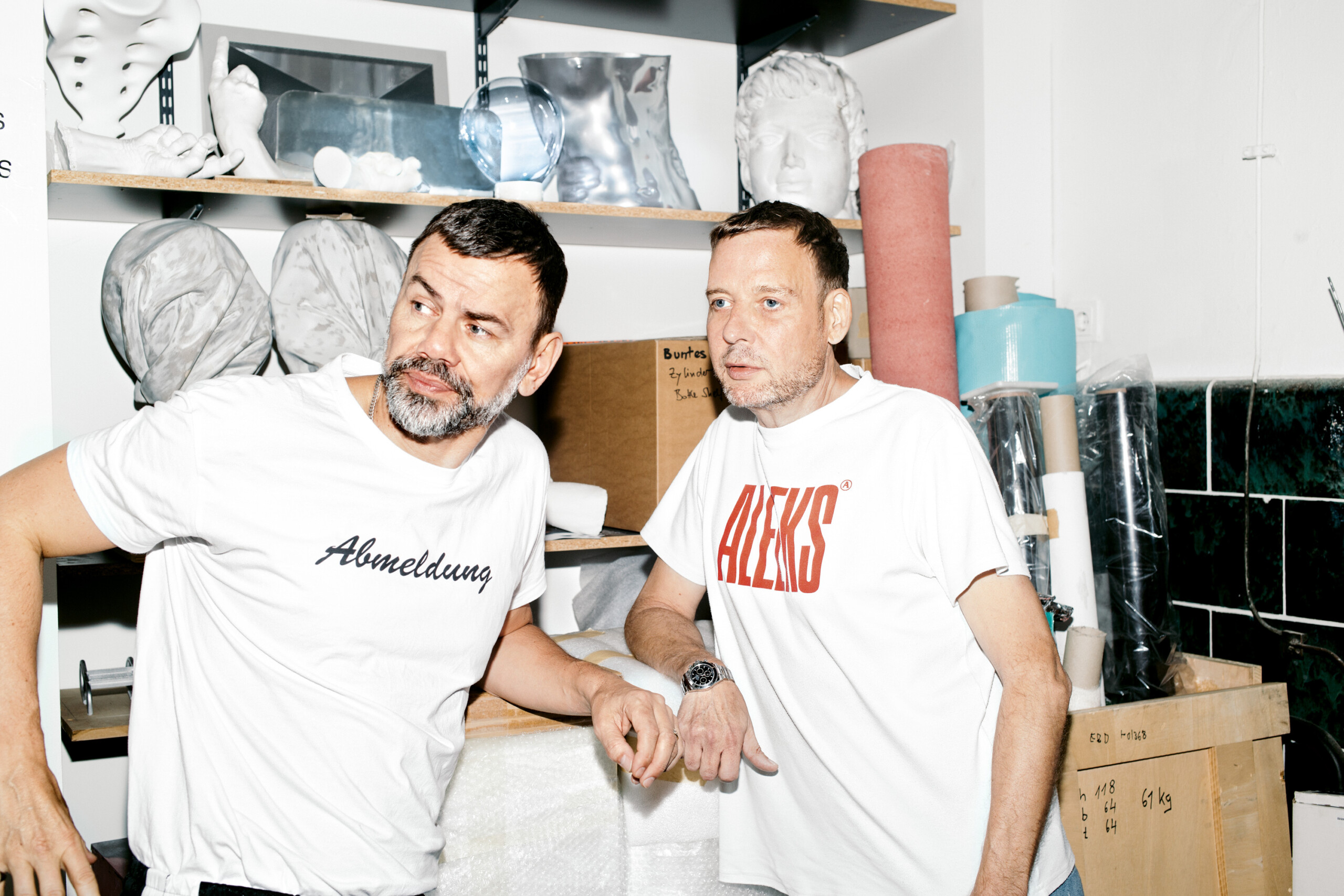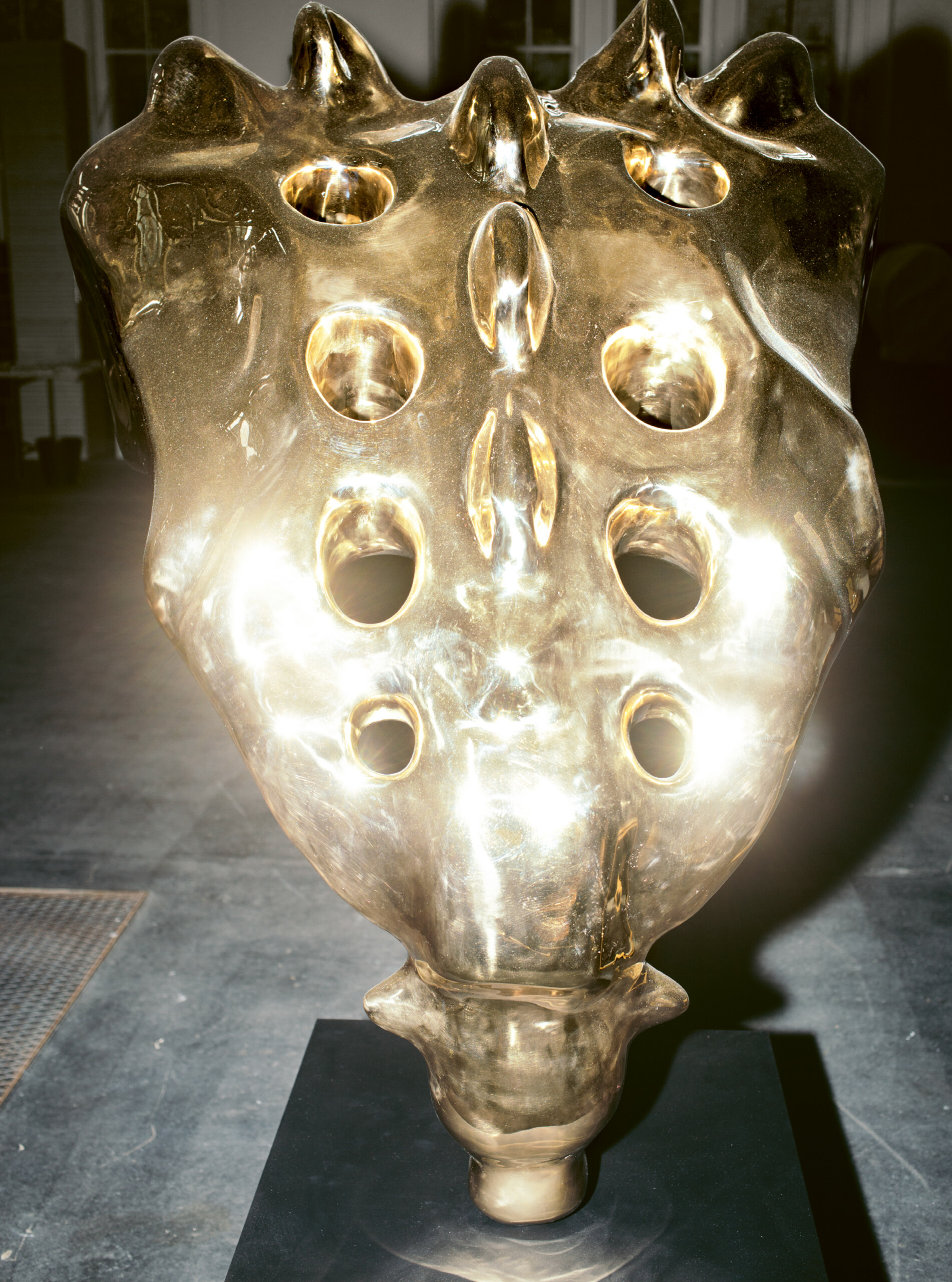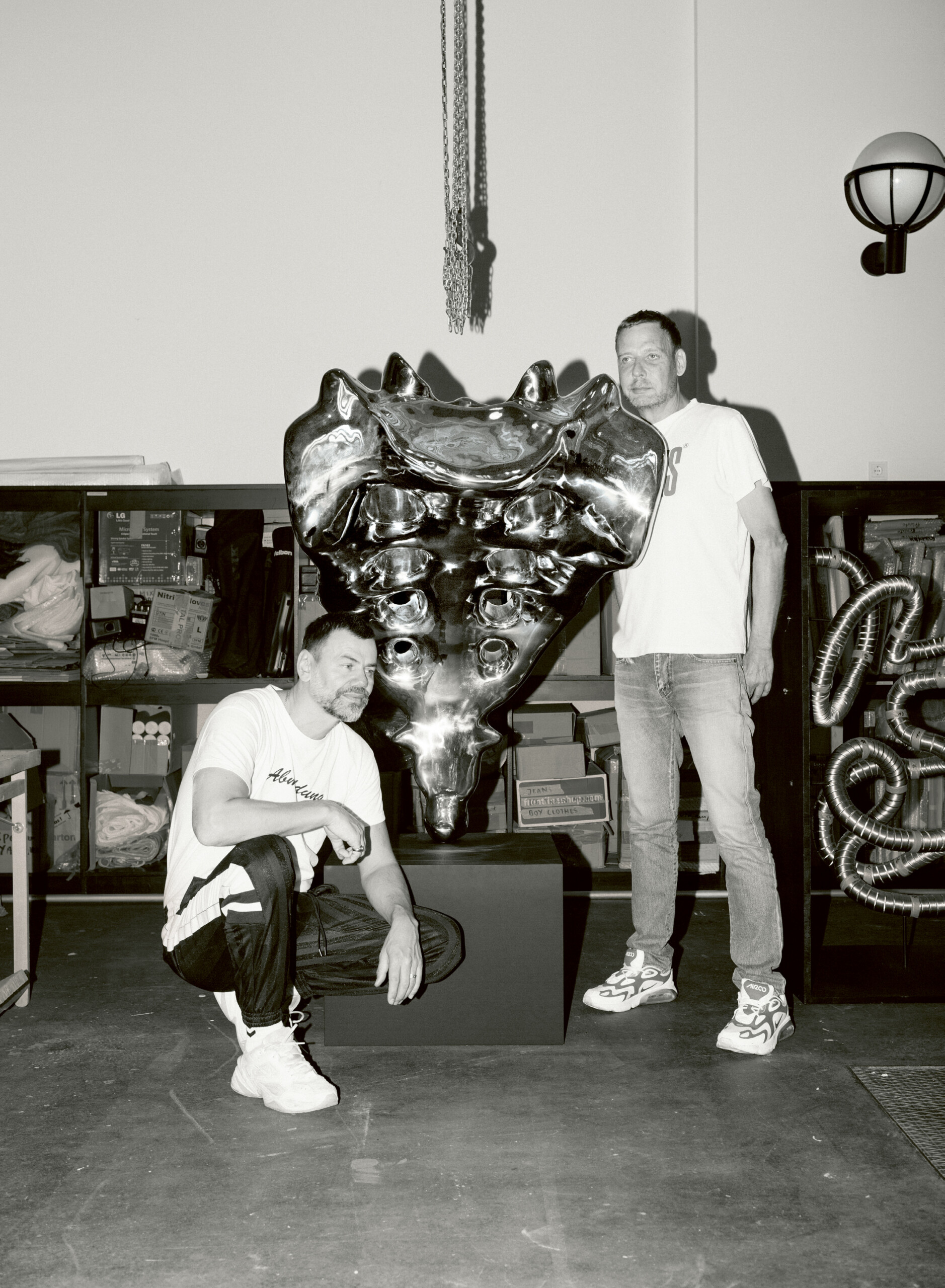A mental tennis game
Elmgreen & Dragset

For the past quarter-century, the artist duo of Elmgreen & Dragset has developed a hybrid practice melding architecture, design and art as well as wit, subversion and subtle social critique. Their “ Prada Marfa” (a forever-closed but fully stocked Prada store, sitting lonely in a Texas desert) first went viral in the 2000s. By now, however, their public sculptures and structures have reached busier, better-trod places like Rockefeller Plaza in New York, the Fourth Plinth in London’s Trafalgar Square and many locations throughout Scandinavia. Not to mention an array of museum and gallery spaces, and lots of new eyes and minds.
Michael Elmgreen is Danish, Ingar Dragset Norwegian. Both are youthful fiftysomethings. They arrived in Berlin in the mid-1990s, when the German capital was a derelict work in progress. It was the perfect setting for the duo–for the first decade of their practice they were also a couple–to move beyond their early performative work to installation, sculpture and public art in all its forms. The two have also curated large-scale events like “A Space Called Public” (a months-long exhibition of public art) in Munich in 2013 and “a good neighbour” at the 15th Istanbul Biennale in 2017. Speaking with them is like watching a mental tennis game played for fun, with ideas and words being lobbed back and forth. Some hit hard and hammer home, others drop and are left to roll for a while before being picked up again.
nomad met the two in the sprawling attic of their studio–a former pumping station with soaring ceilings–in Berlin’s Neukölln district, to discuss Berlin’s early days, what art can do, believing children are our future and transcending Scandinavian conformity.



Do you think your Scandinavian background shapes your work? And if so, how?
I
D
It’s informed our work on many different levels. One element that’s apparent is the influence of Scandinavian functionalist design. Of course, with Minimalism there’s also a certain perception of design having to be functional, and efficient, for large groups of society. But it wasn’t necessarily thought of as exclusive. There are minimalist objects for your household which are also used in schools and institutions, and they’ve become part of a kind of ideology.
M
E
Even kindergartens were done in minimal design; people really got it from early on.
I
D
It has a certain smoothness about it; an elemental control. The ideology is that we are all living in a specific way that’s working perfectly. We are all more or less the same. And in that sense, for us in our work it’s like part fascination and part critical confrontation with these ideas. We can see there are also problematic aspects to traditional Scandinavian design.
-
-
-
-
Please select an offer and read the Complete Article Issue No 8 Collection Issues No 7, 8, 10 Subscriptions
Already Customer? Please login.
